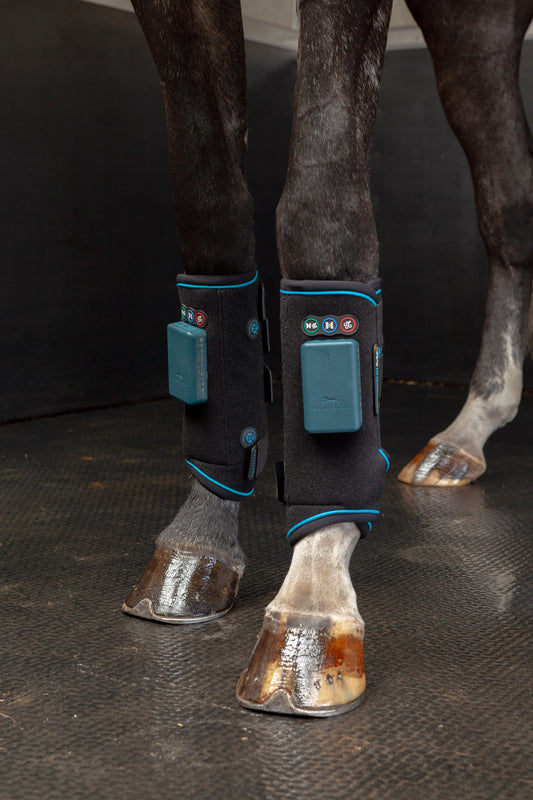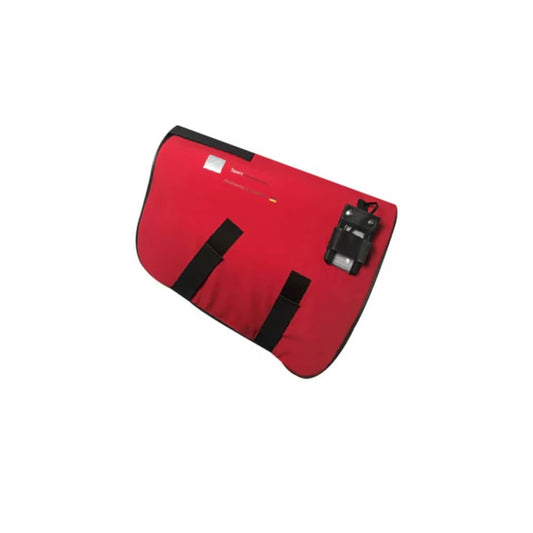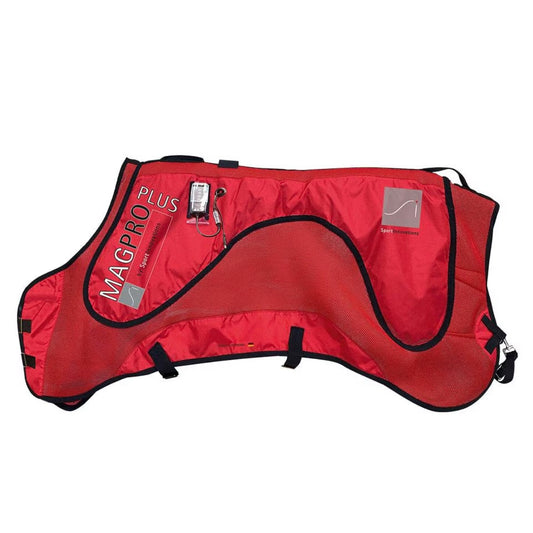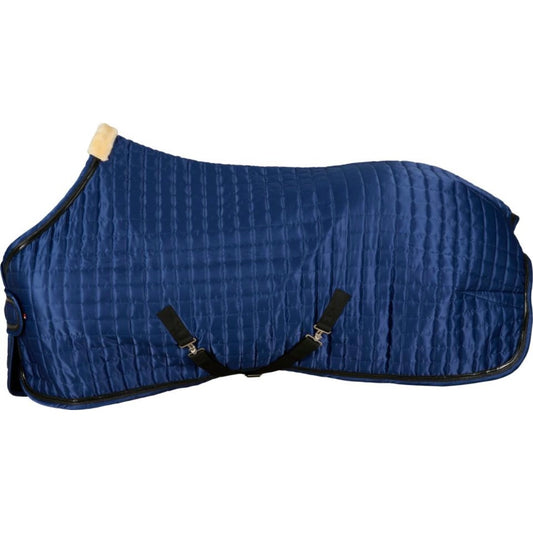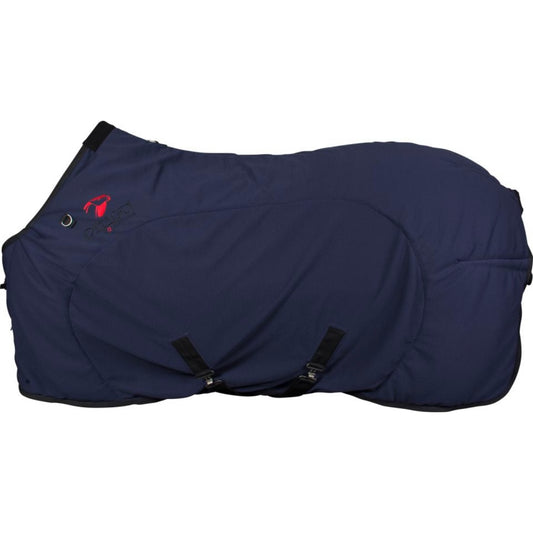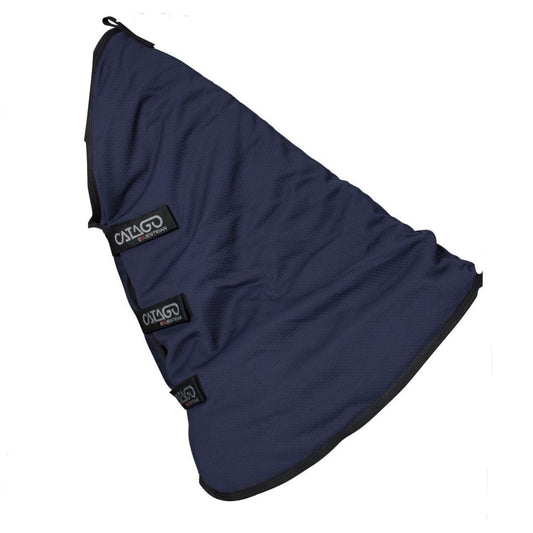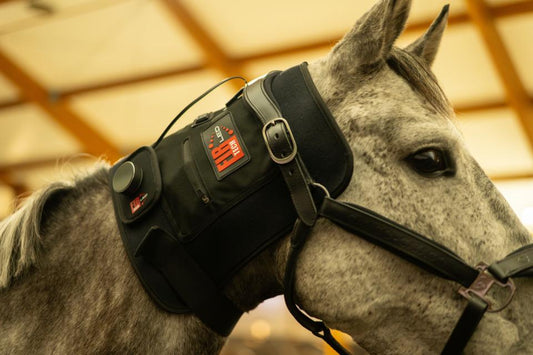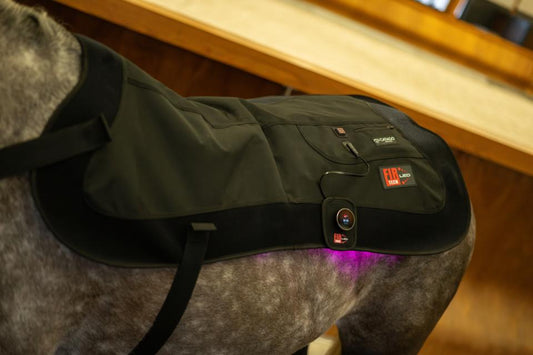Muscle Injuries
Muscle Strain and Tear
Muscle strains and tears are common injuries in horses, often caused by overstretching or tearing of muscle fibers. These injuries can occur in any muscle, but they are particularly prevalent in the hindquarters, back, and shoulder areas due to the high physical demands of activities like racing, jumping, or dressage. The severity of the injury can range from mild discomfort to more severe tears or ruptures.
Causes of Muscle Strain and Tear in Horses
Several factors contribute to muscle strains and tears, often involving excessive physical stress or improper conditioning:
- Excessive Physical Activity: Sudden bursts of activity, such as fast galloping or high jumps, can overstretch or tear muscle fibers, especially if the horse is not properly conditioned.
- Overstretching and Missteps: Forceful stretching or sudden movements (missteps, imbalances) can tear a muscle. This can occur during sharp turns, uneven terrain, or a misstep in the stride.
- Muscle Fatigue: Overworked muscles become less capable of handling strain, which may lead to overstretching and muscle fiber tearing. Lack of rest exacerbates this risk.
- Improper Warm-Up or Cool-Down: Failing to properly warm up the muscles before physical exertion or cool them down afterward can result in injury. Cold, stiff muscles are more prone to strains and tears.
- Muscle Imbalance: A disparity in muscle strength, where some muscles are stronger than others, increases the risk of strain or tear in weaker muscles during strenuous activity.
- Environmental Factors: Slippery, uneven, or hard terrain can lead to missteps, overstretching, or strains.
Prevention of Muscle Strain and Tear
Preventing muscle strains and tears involves proactive management and conditioning:
- Gradual Conditioning: Start with low-intensity exercises and progressively increase the intensity. This allows muscles to adapt to higher physical demands over time.
- Adequate Warm-Up and Cool-Down: Perform a proper warm-up routine (walking and trotting) to increase blood flow to the muscles before exercise, and allow time for a cool-down afterward to promote recovery and prevent stiffness.
- Balanced Training Program: Incorporate a mix of strength, flexibility, and endurance exercises to prevent muscle imbalances that may lead to injury.
- Rest and Recovery: Schedule regular rest days to prevent muscle fatigue and ensure muscles are ready for subsequent training sessions.
- Appropriate Terrain: Train on safe, even, and well-maintained surfaces to reduce the risk of missteps or excessive strain from uneven ground.
- Proper Riding Techniques: Ensure that the rider maintains correct posture and avoids placing undue pressure on the horse's back or neck, which could stress the muscles.
Treatment and Recovery for Muscle Strain and Tear
If you suspect a muscle strain or tear, prompt action and proper treatment are essential for recovery:
- Veterinary Consultation: Seek advice from a veterinarian for an accurate diagnosis. Diagnostic imaging, such as ultrasound or X-rays, may be required to assess the extent of the injury.
- Rest: Allow the horse to rest and avoid strenuous activities. Box rest may be necessary depending on the injury’s severity. Controlled hand-walking can be recommended to maintain circulation without stressing the injured muscle.
- Cold Therapy: Apply ice or cold-water therapy during the first 48 hours to reduce swelling and inflammation. Ice packs should be used for 15-20 minutes every 2-3 hours during this initial phase.
- Pain Management: Nonsteroidal anti-inflammatory drugs (NSAIDs) like phenylbutazone or flunixin meglumine can help manage pain and inflammation.
- Controlled Exercise: After the acute phase, introduce light exercises (e.g., hand walking or light lunging) to encourage muscle recovery. Gradually increase the intensity as healing progresses.
- Regular Monitoring: Continuously monitor the horse’s recovery. If symptoms persist or worsen, seek further veterinary evaluation.
Therapies to Aid Healing
Several therapies can accelerate healing, alleviate pain, and promote recovery:
- PEMF Therapy (Pulsed Electromagnetic Field Therapy): Enhances circulation and tissue repair, reduces inflammation, and stimulates cellular regeneration.
- Cold Laser Therapy: Promotes blood flow, reduces inflammation, and accelerates cellular metabolism and collagen production, aiding in muscle repair.
- Infrared Therapy: Increases circulation to the injured area, providing more oxygen and nutrients to muscles, which speeds up healing.
- NMES Therapy (Neuromuscular Electrical Stimulation): Stimulates muscle contractions, helping to prevent atrophy during early recovery stages.
- Massage and Stretching: Regular massage therapy reduces muscle tightness and stimulates circulation. Stretching exercises improve flexibility and maintain muscle health.
- Stem Cell Therapy: In severe cases, stem cell therapy may be used to regenerate tissue, promoting healing in damaged muscles.
Conclusion
Muscle strains and tears are common but preventable injuries in horses involved in athletic activities. By implementing a proper training regimen, ensuring correct warm-up and cool-down routines, and utilizing appropriate therapeutic treatments, the risk of injury can be minimized. When muscle strains or tears do occur, prompt veterinary care, rest, and therapeutic interventions are vital for a successful recovery. Always work closely with a veterinarian to create a treatment plan tailored to the injury's severity and the horse’s specific needs.
Exertional Rhabdomyolysis (Tying-Up Syndrome)
Exertional Rhabdomyolysis, commonly known as Tying-Up Syndrome, is a condition that involves muscle damage due to excessive exercise, particularly in unfit or improperly conditioned horses. This syndrome is most often observed in performance horses and can vary from mild muscle cramping to severe muscle breakdown, which may lead to complications like kidney failure.
Causes of Exertional Rhabdomyolysis (Tying-Up Syndrome)
Several factors contribute to the development of Tying-Up Syndrome:
- Excessive Exercise: Intense or prolonged physical activity, especially in horses not accustomed to such workloads, is the most common trigger.
- Inadequate Conditioning: Rapidly increasing a horse's workload without proper conditioning can lead to muscle fatigue and spasms, resulting in rhabdomyolysis.
- Electrolyte Imbalance: Deficiencies or imbalances in electrolytes like sodium, potassium, and calcium can disrupt muscle function, contributing to cramps and stiffness.
- Genetic Predisposition: Certain breeds, such as Standardbreds, Thoroughbreds, and Arabians, are genetically predisposed to muscle disorders like polysaccharide storage myopathy (PSSM) or malignant hyperthermia, which increase the risk of rhabdomyolysis.
- Stress and Anxiety: Psychological stress from training or competition can lead to increased muscle tension and fatigue, triggering muscle damage.
- Dietary Factors: Diets that are high in starch and low in fiber, or rich in grain and sugar, may increase the likelihood of muscle damage.
- Temperature and Humidity: High environmental temperatures or humidity can exacerbate the condition by increasing stress and taxing the muscles.
How to Prevent Exertional Rhabdomyolysis (Tying-Up Syndrome)
Preventing Tying-Up Syndrome relies on proper management, conditioning, and environmental factors:
- Gradual Conditioning: Introduce exercise gradually to allow muscles to build strength and endurance. Avoid sudden increases in workload.
- Proper Warm-Up and Cool-Down: Incorporate proper warm-up (to prepare muscles) and cool-down (to promote recovery) periods before and after exercise.
- Balanced Diet: Provide a balanced diet with sufficient fiber, vitamins, and minerals. Minimize simple carbohydrates and ensure adequate forage intake.
- Adequate Electrolyte Supplementation: Maintain proper electrolyte balance, especially during intense exercise or in hot weather.
- Stress Management: Minimize stress by providing a calm, consistent training and competition environment.
- Genetic Testing: For horses with a history of muscle disorders or genetic predispositions, genetic testing can help tailor management strategies.
- Hydration: Ensure your horse stays well-hydrated, particularly before, during, and after exercise, to prevent dehydration and muscle damage.
- Avoid Overworking in Extreme Conditions: Avoid intense exercise in extreme heat or humidity, and provide proper cooling and hydration when working in such conditions.
What to Do If Your Horse Has Exertional Rhabdomyolysis (Tying-Up Syndrome)
If your horse shows signs of Tying-Up Syndrome, immediate action is essential:
- Recognize Symptoms: Signs may include muscle stiffness, pain, sweating, elevated heart rate, and reluctance to move.
- Call the Veterinarian: Contact a veterinarian to confirm the diagnosis and rule out other conditions. Blood tests may be needed to measure muscle enzymes such as creatine kinase (CK) and aspartate aminotransferase (AST).
- Box Rest and Restricted Movement: Limit movement to prevent further muscle strain until the acute phase subsides.
- Hydration and Electrolyte Balance: Ensure your horse is hydrated and provide electrolyte supplementation as directed by your veterinarian.
- Pain Management: Your vet may prescribe NSAIDs to manage pain and inflammation.
- Cool the Muscles: Apply cold therapy (e.g., ice packs or cold water hosing) during the first 24-48 hours to reduce muscle inflammation and ease tension.
Therapies to Aid in Recovery from Exertional Rhabdomyolysis (Tying-Up Syndrome)
Several therapies can support the recovery process and promote healing of damaged muscles:
- PEMF Therapy (Pulsed Electromagnetic Field Therapy): Improves circulation, reduces inflammation, and accelerates muscle tissue healing.
- Infrared Therapy: Penetrates deep into muscle tissues, improving blood flow and reducing stiffness.
- Cold Laser Therapy (Low-Level Laser Therapy): Aids cellular repair, enhances circulation, and reduces pain.
- Vibration Therapy: Promotes relaxation, improves blood flow, and reduces muscle tension.
- NMES Therapy (Neuromuscular Electrical Stimulation): Stimulates muscle fibers to prevent atrophy and encourages muscle strength recovery after the acute phase.
- Massage Therapy: Gentle massage helps relax stiff muscles, improve circulation, and promote flexibility, once the initial inflammation subsides.
- Restorative Rehabilitation: Gradually reintroduce exercise, including light walking and controlled movements, to rebuild strength and mobility.
Conclusion
Exertional Rhabdomyolysis (Tying-Up Syndrome) is a serious condition that can result in significant muscle damage if not properly managed. Prevention through gradual conditioning, a balanced diet, hydration, electrolyte supplementation, and stress management is crucial. Immediate veterinary intervention, rest, hydration, and therapies like PEMF, cold laser, and infrared therapy are essential for effective treatment and recovery. By taking a proactive approach, you can minimize the risk of tying-up and ensure the health and performance of your horse.
Muscle Cramps
Muscle cramps in horses are sudden, involuntary muscle contractions that can cause significant pain and discomfort. These cramps are commonly found in the hindquarters, neck, or back muscles and can range from mild tightness to severe spasms. Understanding the causes, prevention, and treatment options for muscle cramps is essential for horse owners to ensure their horses' well-being and performance.
Causes of Muscle Cramps in Horses
Several factors can lead to muscle cramps in horses:
- Electrolyte Imbalance: Deficiencies in electrolytes like sodium, potassium, calcium, and magnesium disrupt muscle function and can trigger cramps.
- Dehydration: Dehydration, often caused by hot weather or intense exercise, increases the risk of cramps by leading to electrolyte imbalances.
- Inadequate Warm-Up or Cool-Down: Lack of proper warm-up or cool-down routines can cause muscles to become tight, increasing the likelihood of cramping during or after exercise.
- Excessive Exercise: Overworking an unconditioned horse or failing to allow adequate recovery time can result in muscle fatigue and cramps.
- Tight or Stiff Muscles: Horses with poor flexibility or those not regularly exercised or stretched are more prone to muscle cramps.
- Poor Nutrition: A diet lacking in essential nutrients such as magnesium, calcium, and potassium can contribute to muscle cramping.
- Stress and Anxiety: Emotional stress can cause muscle tension and increase the risk of cramps.
- Injury or Strain: Pre-existing muscle injuries can lead to compensatory muscle cramps in surrounding areas.
How to Prevent Muscle Cramps in Horses
Preventing muscle cramps requires proper management, conditioning, and nutrition:
- Proper Conditioning: Gradually increase exercise intensity to build strength and endurance. Avoid sudden spikes in workload.
- Adequate Hydration: Ensure your horse always has access to fresh water. During hot weather or intense exercise, electrolyte supplementation may be needed.
- Balanced Diet: Provide a diet rich in essential vitamins, minerals, and electrolytes. Consult with a nutritionist to ensure your horse's diet supports muscle health.
- Warm-Up and Cool-Down: Always warm up before exercise and cool down afterward to prevent muscle tightness.
- Stretching and Flexibility Exercises: Regular stretching improves muscle flexibility, reducing the risk of cramps.
- Manage Stress: Create a calm, consistent environment to minimize stress and anxiety, which can contribute to muscle cramps.
- Monitor Environmental Conditions: Avoid heavy exercise in extreme temperatures or humidity that could increase the risk of cramping.
What to Do If Your Horse Has Muscle Cramps
If your horse experiences muscle cramps, take immediate action to address the issue:
- Stop the Exercise Immediately: Cease any activity to allow your horse to rest and recover. Continuing exercise could worsen the situation.
- Assess the Situation: Check for visible signs of muscle tightness, swelling, or pain. Gently palpate the affected area to identify specific points of discomfort.
- Hydration and Electrolytes: Provide fresh water and electrolyte supplementation as needed to address dehydration.
- Cold Therapy: Apply cold therapy (ice packs or cold water hosing) to reduce inflammation and cool the muscles.
- Gentle Massage: Once the cramping subsides, gently massage the muscles to improve blood flow and relax the fibers. Be cautious not to apply excessive pressure.
- Rest and Recovery: Allow your horse ample rest to recover. Depending on the severity, box rest may be necessary to aid healing.
- Veterinary Care: If cramps persist, are severe, or if there are additional symptoms like lameness or swelling, consult your veterinarian for further evaluation.
Therapies to Help with Muscle Cramps in Horses
Several therapeutic treatments can assist in the recovery process and help prevent future cramping episodes:
- PEMF Therapy (Pulsed Electromagnetic Field Therapy): Enhances circulation, reduces inflammation, and accelerates muscle recovery.
- Infrared Therapy: Improves blood flow and promotes deep muscle relaxation and pain relief.
- LED Therapy (Light Emitting Diode Therapy): Uses light wavelengths to stimulate tissue repair and reduce inflammation, supporting muscle recovery.
- Vibration Therapy: Increases blood flow, reduces muscle tension, and promotes relaxation, particularly for chronic muscle tightness.
- Cooling Therapy: Apply cold packs or ice baths post-exercise to reduce inflammation and prevent cramping.
- NMES Therapy (Neuromuscular Electrical Stimulation): Stimulates muscle fibers to promote strength and prevent atrophy during recovery.
- Massage and Stretching: Regular massage and stretching can help maintain flexibility, reduce muscle tension, and prevent cramps.
Conclusion
Muscle cramps in horses can cause significant discomfort, but they are often preventable with proper care. Ensure your horse is well-conditioned, hydrated, and receives adequate nutrition to minimize the risk of cramps. In the event of cramping, prompt intervention with rest, hydration, cold therapy, and professional treatments can support recovery and reduce the likelihood of future cramping episodes. By following preventive strategies and utilizing therapeutic treatments, horse owners can help ensure their horses remain healthy and perform at their best.


